In 2020, the World Health Organization declared that it was the year of the nurse. The WHO then spent the year acknowledging and honoring the hard, necessary work that nurses devote their lives to, from bringing babies into the world to providing end-of-life care and everything in between. It also used the honor as a reminder that the world needs 9 million more nurses and midwives to achieve universal health care within the next 10 years.
In the United States alone, the Bureau of Labor Statistics predicts that there will be an additional 175,900 job openings for registered nurses over the next decade, for a total of 7 percent growth. It also reports that nurses who hold a BSN, or Bachelor of Science in nursing, will have better employment prospects than those who have lesser certifications. Luckily, there are thousands of colleges around the country that have certified nursing programs, giving students plenty of choice.
However, these programs aren't all created equal. Among other things, some schools offer more clinical opportunities, have higher NCLEX pass rates, and report better job placement rates than others. So how do you narrow down the best options?
Nursingeducation.org used data from Niche's 2021 Best Colleges for Nursing in America report to compile a list of the best 50 colleges for aspiring nursing students. The colleges are ranked based on Niche's internal ranking and scoring system. The ranking takes into consideration graduation rates; SAT/ACT scores; how popular the nursing program is among students in each college; and reviews from nursing students and alumni about the academic, financial, and student life experiences at each school.
Read on to find which school earns the honor of being the best college for nursing in America. It may not be what you were expecting.
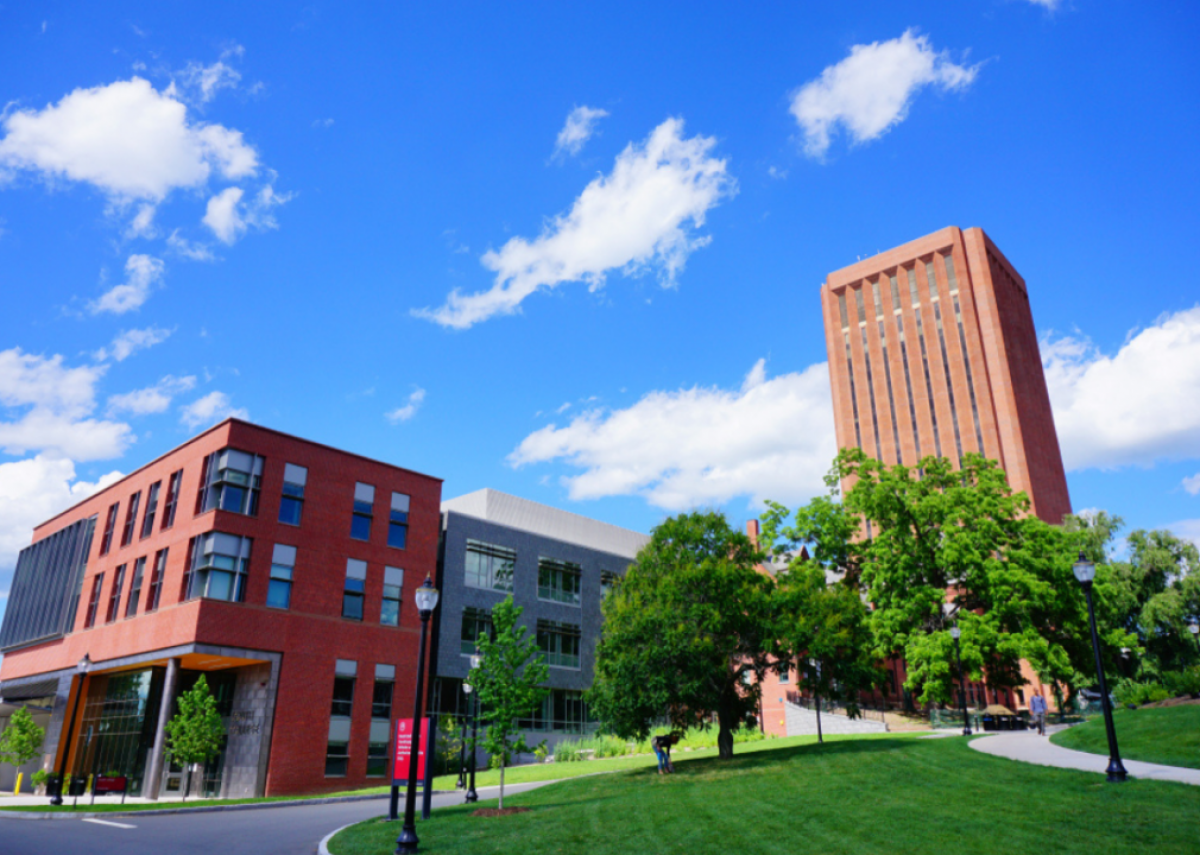
50. University of Massachusetts Amherst
- Location: Amherst, Massachusetts
- Undergraduate students: 21,784
- Student-teacher ratio: 17:1
- Net price per year: $22,927
- College acceptance rate: 60%
--- SAT score range: 1190-1390
- Graduation rate: 82%
The nursing program at the University of Massachusetts Amherst is an incredibly competitive one, with a 10 percent acceptance rate. On average, only 64 students are admitted into the program each year, which keeps class sizes small and allows for more personalized instruction. Students who have completed the program also report the state-of-the-art classrooms, labs, and clinical settings as major draws.

49. Cedarville University
- Location: Cedarville, Ohio
- Undergraduate students: 3,278
- Student-teacher ratio: 15:1
- Net price per year: $23,827
- College acceptance rate: 79%
--- SAT score range: 1120-1350
- Graduation rate: 75%
The nursing program at Cedarville University, a Christian college, is a well-balanced mix of religion and rigorous curriculum that prepares its students to be leaders in the industry. Alongside traditional bachelor's and master's programs, the school offers a cross-cultural nursing minor that includes an overseas internship and prepares students to work in health care in foreign, underserved countries. Nursing students also get to attend class in a new Health Sciences Center that contains several skills laboratories as well as a simulated clinical laboratory.

48. University of Iowa
- Location: Iowa City, Iowa
- Undergraduate students: 21,690
- Student-teacher ratio: 16:1
- Net price per year: $17,008
- College acceptance rate: 83%
--- SAT score range: 1130-1340
- Graduation rate: 72%
The University of Iowa is at the forefront of nursing research, earning more than $1.98 million in grants and contracts in 2018. This impressive budget, which allows the school to advance the nursing discipline and give its students a better, more exact education, combined with its impressive array of student organizations—like a Sigma Theta Tau chapter, the Minority Nurse Association, and University of Iowa Men in Nursing—makes it an excellent choice for prospective Bachelor of Science in nursing and Master of Science in nursing students.

47. Drexel University
- Location: Philadelphia
- Undergraduate students: 13,942
- Student-teacher ratio: 11:1
- Net price per year: $38,025
- College acceptance rate: 77%
--- SAT score range: 1190-1390
- Graduation rate: 69%
On top of the typical bachelor's and master's degree programs, Drexel University offers an Accelerated Career Entry BSN program that has proven to be wildly popular. The program is an 11-month intensive that is designed for students who already hold a bachelor's degree but have since decided they want to enter the nursing field. While the program is not inexpensive—$13,466 per term during the 2020-2021 school year and not eligible for institutional aid—it still makes a worthwhile investment for those looking to kick-start a new career.

46. Westminster College – Utah
- Location: Salt Lake City
- Undergraduate students: 1,865
- Student-teacher ratio: 8:1
- Net price per year: $22,971
- College acceptance rate: 100%
--- SAT score range: 1000-1300
- Graduation rate: 58%
Westminster College is home to another nursing program that benefits from small class sizes. Individual classes, which are taught in a unique "flipped" method where students are given learning materials before arriving at a lecture allowing them to come better prepared to ask questions and engage with the material, are capped at 24 students. Additionally, Westminster goes to great lengths to help their students make professional connections, with 90 percent employed or enrolled in graduate school just five months after earning their degrees.
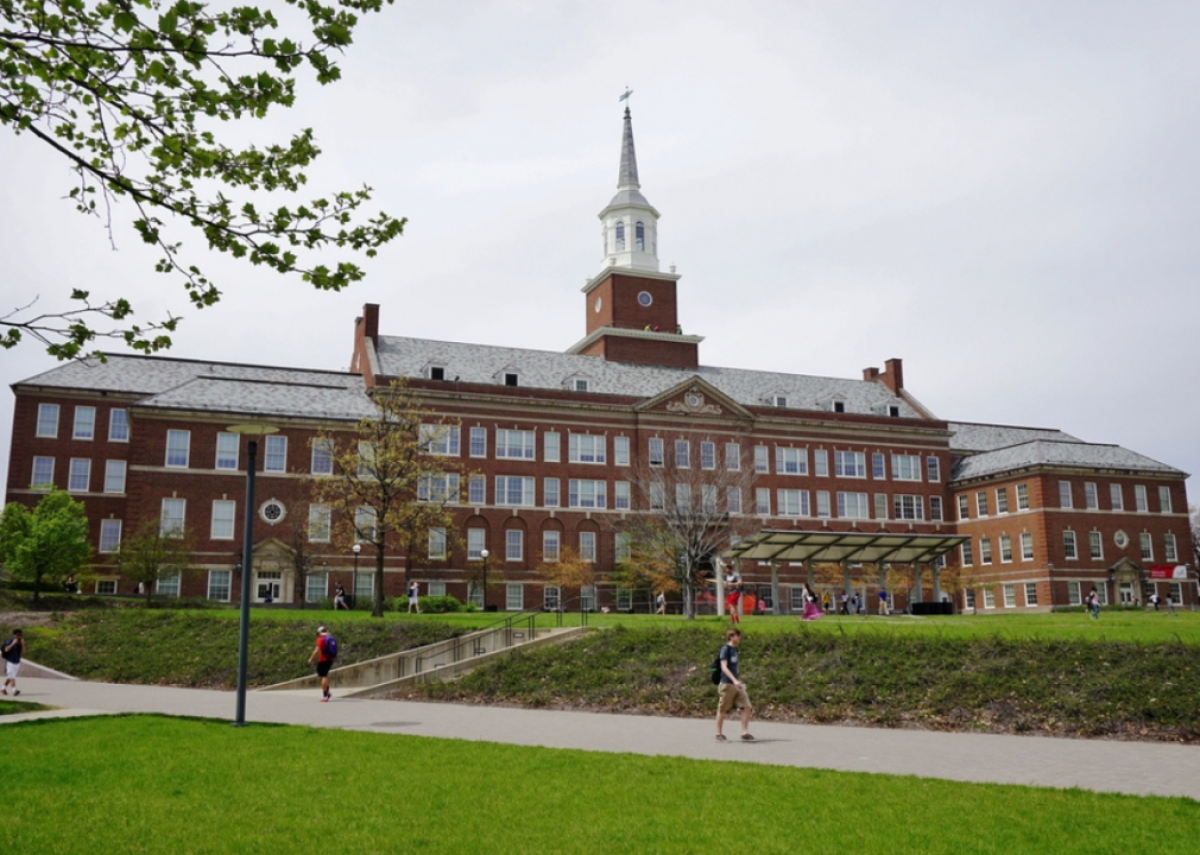
45. University of Cincinnati
- Location: Cincinnati
- Undergraduate students: 22,990
- Student-teacher ratio: 16:1
- Net price per year: $19,219
- College acceptance rate: 73%
--- SAT score range: 1120-1350
- Graduation rate: 71%
The University of Cincinnati has been training some of the industry's most competent and compassionate nurses for 130 years. The program focuses on experience-based learning through programs like a co-op program that pairs third-year students with experienced preceptors in a paid internship position, and dedicated education units that pair students with volunteer staff nurses who they can shadow in real-world settings. At $6,069 a semester for in-state students, the college is an affordable option for those who aren't looking to spend an arm and a leg.
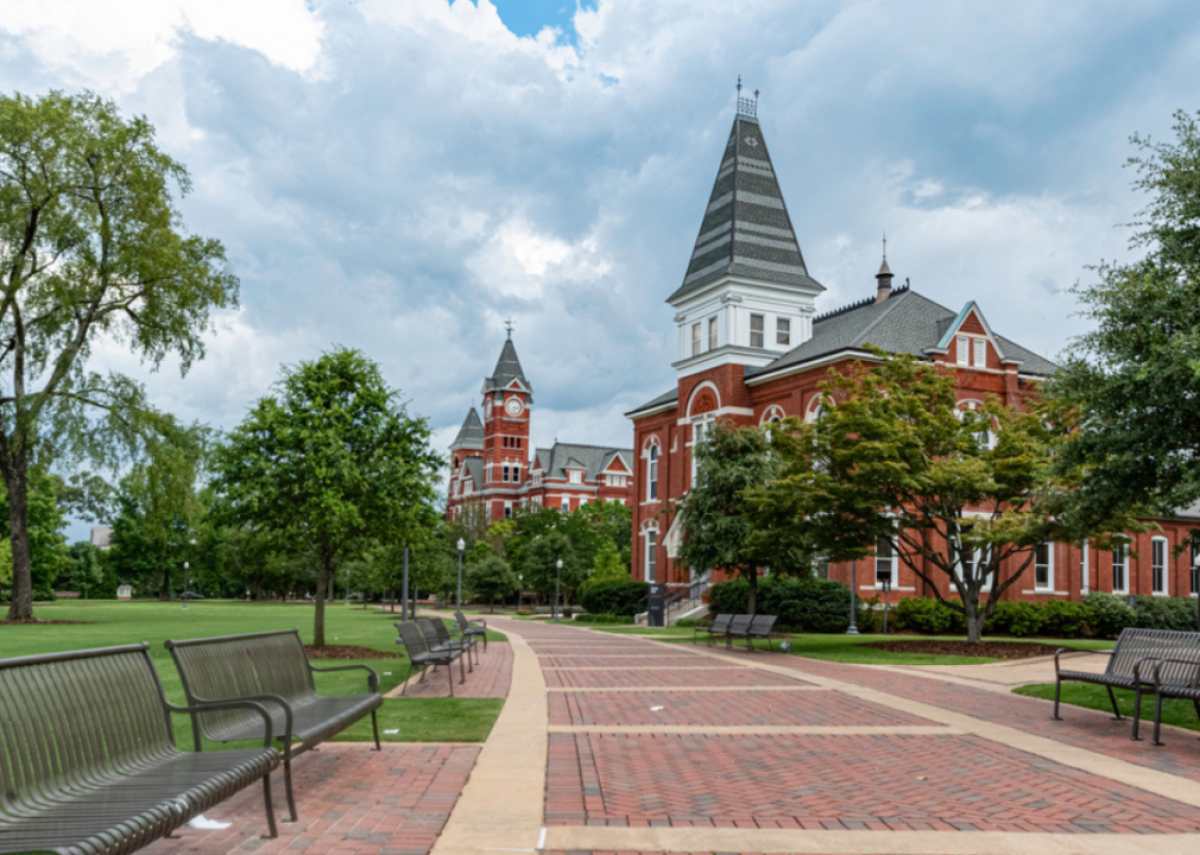
44. Auburn University
- Location: Auburn, Alabama
- Undergraduate students: 22,460
- Student-teacher ratio: 19:1
- Net price per year: $23,562
- College acceptance rate: 75%
--- SAT score range: 1150-1320
- Graduation rate: 79%
At Auburn University nursing students have access to the Engaging Active Group Learning Environments in Simulation (EAGLES) Center and the Nursing Resource Center, two 10,000-square-foot learning spaces that provide opportunities for simulated learning experiences and skills labs, respectively. Equipped with functioning, state-of-the-art equipment, the centers allow students to gain and perfect their skills in safe, controlled environments, ensuring that they're confident in the abilities before employing them in the real world. These advanced facilities make the school's hefty price tag well worth it.
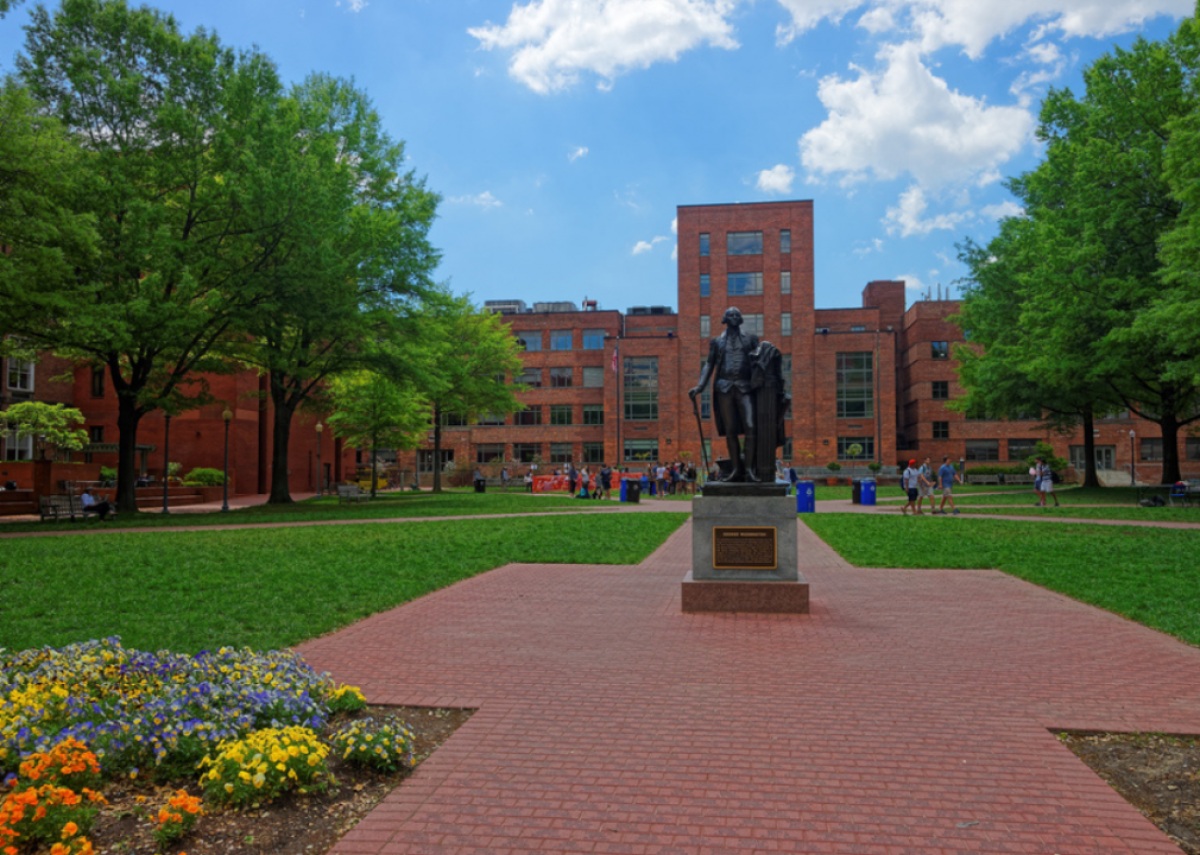
43. George Washington University
- Location: Washington D.C.
- Undergraduate students: 11,334
- Student-teacher ratio: 13:1
- Net price per year: $38,829
- College acceptance rate: 42%
--- SAT score range: 1280-1470
- Graduation rate: 82%
George Washington University has a nursing program that can be specifically tailored for military veterans, which takes into account their service, experience, and prior education. Based out of the university's Ashburn, Virginia, campus, the program typically runs for 15 months, including 60 credit hours and 500 clinical hours, which allows servicemen and women to cut substantial amounts of time off of their education. This unique program is cited as a major draw for would-be nurses.

42. Seattle University
- Location: Seattle
- Undergraduate students: 4,469
- Student-teacher ratio: 11:1
- Net price per year: $35,569
- College acceptance rate: 76%
--- SAT score range: 1150-1320
- Graduation rate: 74%
Established in 1935, the nursing school at Seattle University is one of the oldest and most prestigious programs in the state. Accredited through 2030, the program is beloved by students for its small class sizes, focus on community engagement, and proximity to some of the best hospitals in the nation. Additionally, the school's 19,000-square-foot clinical performance lab, located inside the former Providence Hospital building, is a key factor in many students' application decisions.
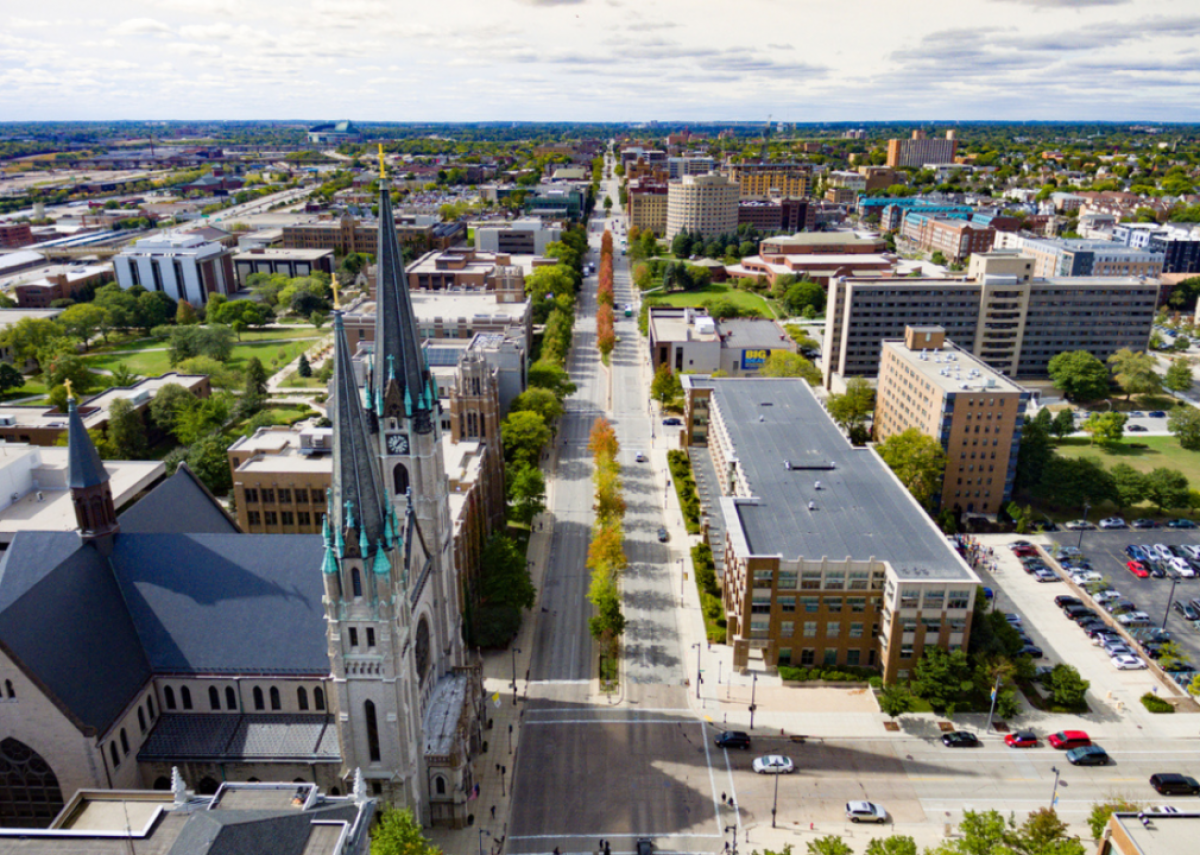
41. Marquette University
- Location: Milwaukee
- Undergraduate students: 8,121
- Student-teacher ratio: 14:1
- Net price per year: $34,120
- College acceptance rate: 82%
--- SAT score range: 1120-1320
- Graduation rate: 82%
Another school with a nursing program on the smaller side, Marquette University has just 608 students enrolled in each of its bachelor's and master's degree programs. With more specialized master's degree programs than many other schools offer—such as nurse anesthesia, nurse midwifery, and pediatric acute care nurse practitioner—the Wisconsin college would make an excellent option for those looking to take their education to the next level. The school also offers master's in nursing programs for those who hold a bachelor's degree in a different field, which can be completed in 18-21 months to allow for an easy career change.

40. Augustana University
- Location: Sioux Falls, South Dakota
- Undergraduate students: 1,717
- Student-teacher ratio: 12:1
- Net price per year: $24,481
- College acceptance rate: 65%
--- SAT score range: 1090-1360
- Graduation rate: 71%
In 16 months and for $26,500, students at Augustana University can complete the post-baccalaureate accelerated nursing program, a course of study that has been ranked third in the nation by Best Value Schools. Taught by the same renowned faculty that lead the traditional program, students who choose this option have a higher NCLEX pass rate than the state and national average. In 2019, 100 percent passed the licensure test on their first try, and 100 percent report finding nursing jobs shortly after graduation.

39. Stanbridge University
- Location: Irvine, California
- Undergraduate students: 1,230
- Student-teacher ratio: 15:1
- Net price per year: $25,054
- College acceptance rate: 53%
--- SAT score range: —
- Graduation rate: 68%
Nursing students at California's Stanbridge University will have access to some of the most technologically advanced study tools available, including a virtual reality lab used in anatomy and physiology courses and one of the first SynDaver Synthetic Cadaver Labs on the West Coast. These learning tools, as well as lectures from the college's renowned faculty, have been proven to give Stanbridge students an advantage when it comes to preparing for licensure. The university holds a 98 percent first-time NCLEX pass rate from the school's inception through 2020.
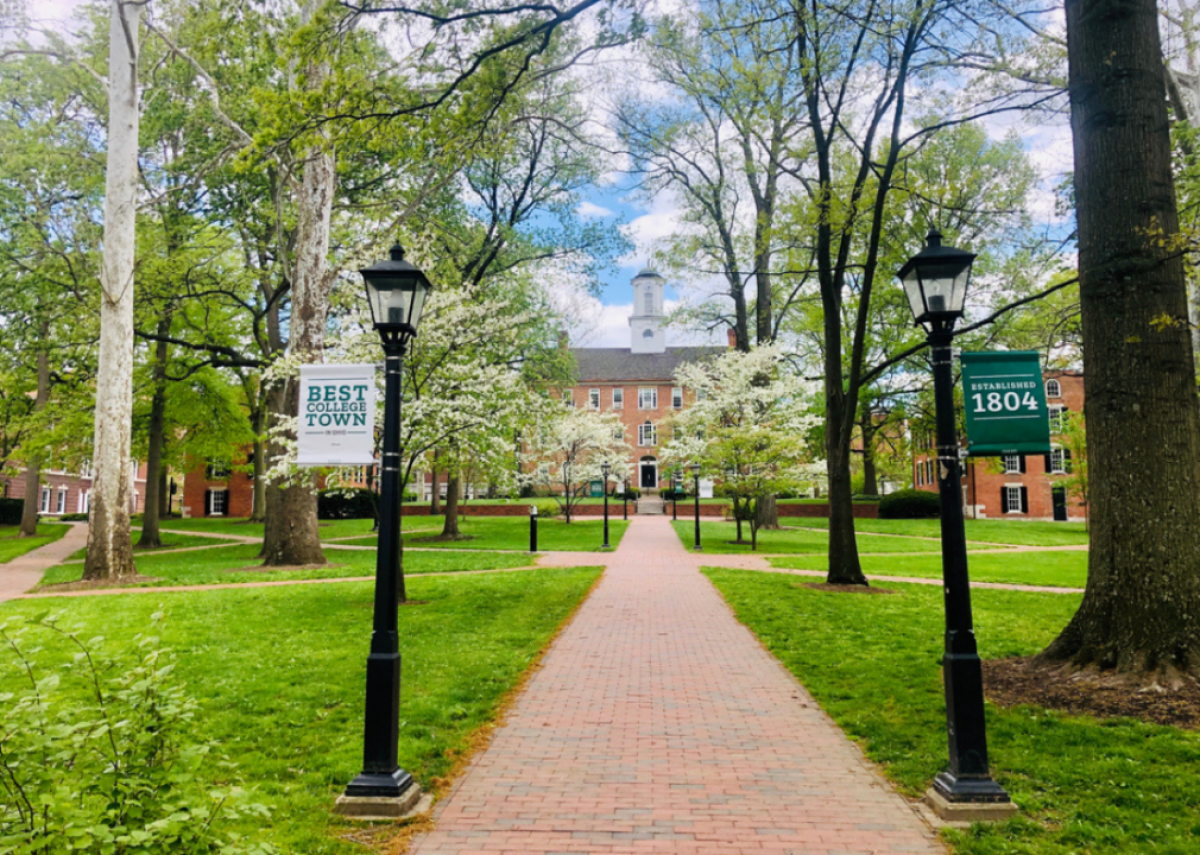
38. Ohio University
- Location: Athens, Ohio
- Undergraduate students: 17,046
- Student-teacher ratio: 17:1
- Net price per year: $22,521
- College acceptance rate: 78%
--- SAT score range: 1050-1260
- Graduation rate: 65%
Ohio University offers a variety of nursing programs, including its innovative online RN to BSN program. This unique offering, which is ranked No. 13 in the nation, allows registered nurses a flexible way to obtain a bachelor's degree in only 31 classroom hours and 30 residency hours, dependent on previously completed coursework. Additionally, Ohio University is currently waiving application fees for all of its nursing programs through spring 2021 as a way of showing appreciation for all of the health care workers who have stepped up during the coronavirus pandemic.

37. University of California – Los Angeles
- Location: Los Angeles
- Undergraduate students: 31,009
- Student-teacher ratio: 18:1
- Net price per year: $15,718
- College acceptance rate: 14%
--- SAT score range: 1300-1530
- Graduation rate: 92%
UCLA's nursing school offers five programs: a bachelor's of science; a master's entry clinical nurse, for would-be nurses who hold a bachelor's degree in another field; an advanced practice master's degree; a doctorate in nursing research; and a doctorate in nursing practice. With only 604 students enrolled in all five of the nursing programs, class sizes are small, which allows for frequent interaction with the school's 36 staff members, who all hold doctorate degrees. Research lies at the core of the nursing program's mission, and students have ample opportunity, including a summer research program open to rising seniors, to get involved in the field-changing work.

36. Samford University
- Location: Birmingham, Alabama
- Undergraduate students: 3,453
- Student-teacher ratio: 12:1
- Net price per year: $30,695
- College acceptance rate: 82%
--- SAT score range: 1070-1250
- Graduation rate: 76%
An incredible 97 percent of Samford University's Moffett and Sander's School of Nursing graduates are employed within six months of their graduation. Ranked in the top 100 nursing programs in the world, the school is known for its well-qualified faculty, 22,000-square-foot skills and simulation lab, and for its high-quality clinical opportunities at 1,320 different placement sites. As of May 2020, 92 percent of Samford University's nursing graduates pass the NCLEX on the first attempt, and 100 percent of alumni report that they would choose Samford all over again.
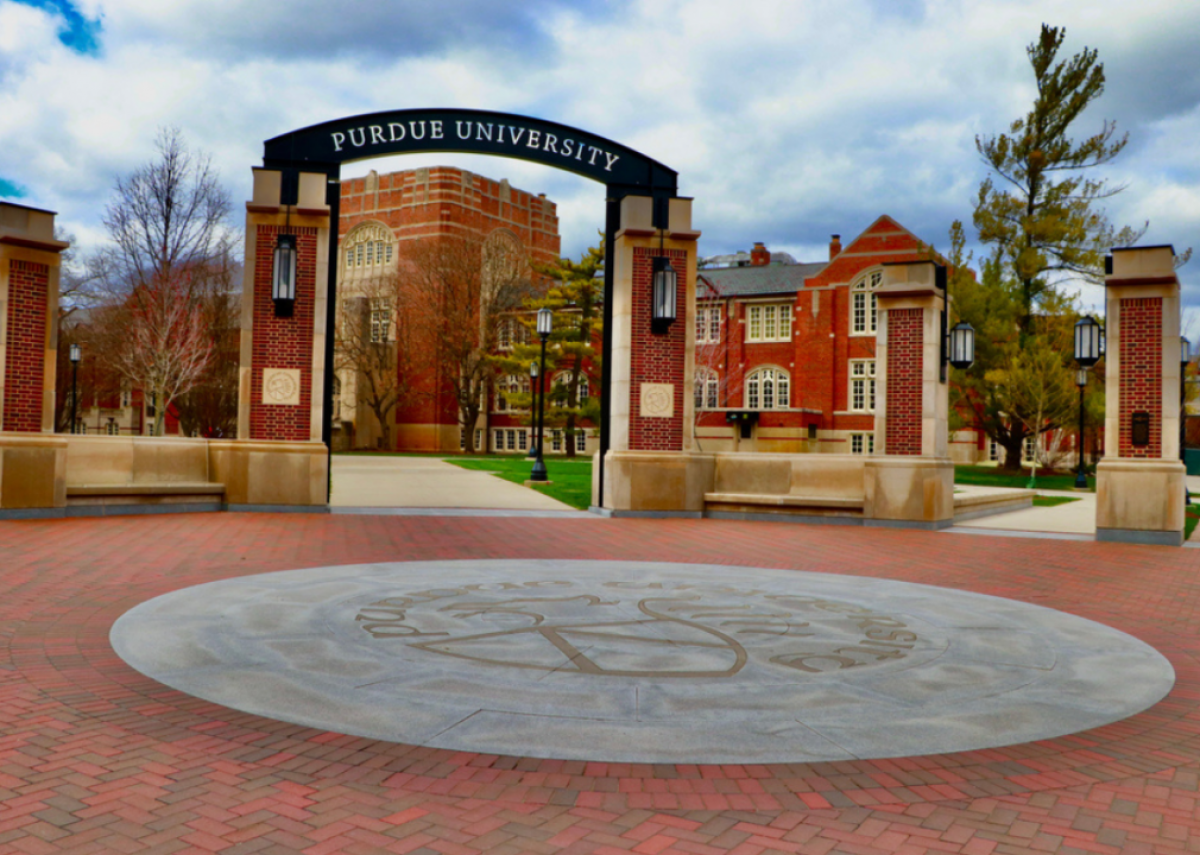
35. Purdue University
- Location: West Lafayette, Indiana
- Undergraduate students: 31,849
- Student-teacher ratio: 13:1
- Net price per year: $12,684
- College acceptance rate: 58%
--- SAT score range: 1190-1440
- Graduation rate: 82%
Purdue University began its nursing program in 1963 with a class of 30 students, and it has been growing rapidly ever since, with about 550 undergraduates and 50 master's and doctorate students enrolled today. One thing that makes the Indiana school stand apart from the pack is its cooperative work experience opportunities, which are available to students as early as their first semester. An annual Nursing Career Fair and Health Career Days also help ensure students will be able to find employment after graduation.

34. Fairfield University
- Location: Fairfield, Connecticut
- Undergraduate students: 3,989
- Student-teacher ratio: 12:1
- Net price per year: $39,546
- College acceptance rate: 60%
--- SAT score range: 1210-1350
- Graduation rate: 83%
If Fairfield University's recently opened 70,000-square-foot nursing school facilities, which boast modern labs and enhanced clinical settings such as an anesthesia simulation room, don't seem roomy enough, nursing students have several opportunities to explore new countries through study abroad programs. Undergraduates have the option of learning and honing their skills in countries like Nicaragua, Australia, and Ireland. More than 30 percent of students take advantage of these opportunities, spending either a summer, a semester, or a full year abroad.

33. Creighton University
- Location: Omaha, Nebraska
- Undergraduate students: 4,291
- Student-teacher ratio: 11:1
- Net price per year: $32,145
- College acceptance rate: 71%
--- SAT score range: 1170-1350
- Graduation rate: 81%
Hands-on professional experience has long been understood to be a key factor in a student's ability to nab a job after graduation. At Creighton University, nursing students have plenty of opportunities to acquire this kind of experience throughout their undergraduate years, whether it's at free health clinics in Omaha, at the Institute for Latin American Concern in the Dominican Republic, or at Omaha's Porto Urgent Care Clinic. This experience, which comes in addition to regular clinicals, has boosted the university's job placement rate to 100 percent within six months of graduation.

32. University of Minnesota – Twin Cities
- Location: Minneapolis
- Undergraduate students: 30,001
- Student-teacher ratio: 17:1
- Net price per year: $17,279
- College acceptance rate: 52%
--- SAT score range: 1260-1480
- Graduation rate: 83%
Students looking to pursue a doctorate in nursing should consider the University of Minnesota – Twin Cities, which has the second-largest Doctor of Nursing Practice program in the country and consistently ranks among the top 10 percent of all DNP programs. The school was also the first in the country to offer DNP degrees in nurse anesthesia, health innovation and leadership, and nursing informatics. And if a doctorate is not on your radar right now, undergraduate students are still eligible for the $2.3 million in scholarships that the University of Minnesota awards to nursing students each year.

31. Binghamton University, SUNY
- Location: Vestal, New York
- Undergraduate students: 13,630
- Student-teacher ratio: 19:1
- Net price per year: $17,424
- College acceptance rate: 40%
--- SAT score range: 1280-1440
- Graduation rate: 82%
Just this year, the Binghamton University nursing program moved into its new 113,000-square-foot Johnson City headquarters, which is equipped with an entire floor of simulation spaces and practice labs. The school's curriculum places particular emphasis on health care in rural areas and for vulnerable populations, with much of its research focused on these groups. In 1997, the school established the O'Connor Office of Rural Health, which, among other things, allows its students hands-on experience treating patients in rural settings.

30. University of Miami
- Location: Coral Gables, Florida
- Undergraduate students: 10,484
- Student-teacher ratio: 12:1
- Net price per year: $33,102
- College acceptance rate: 32%
--- SAT score range: 1270-1440
- Graduation rate: 83%
The first collegiate nursing program in the Miami area, the School of Nursing and Health Studies at the University of Miami has been educating students since 1948. Ever the leader, the school is at the forefront of simulation-based education and research. Its Simulation Hospital for Advancing Research and Education is globally recognized, attracting students, researchers, and educators from all over the world, and acting as a regular piece of UM students' education.
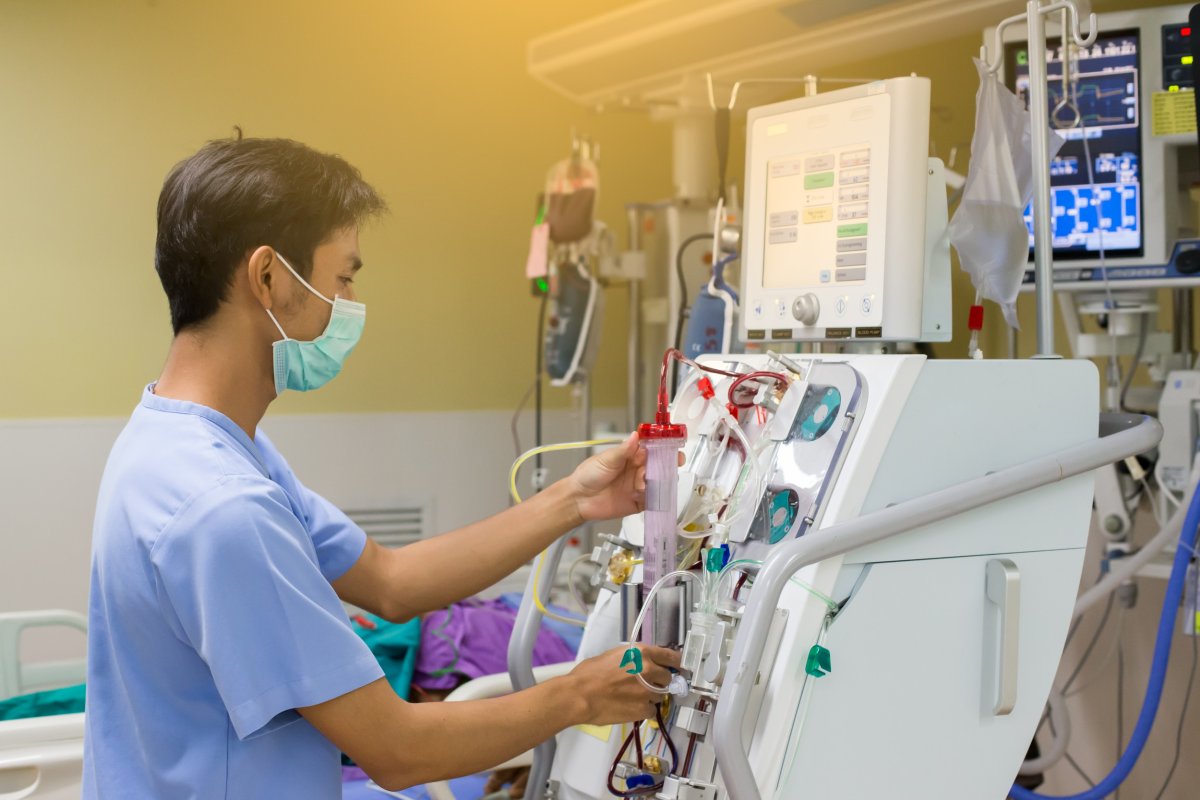
29. Maryville University
- Location: Saint Louis
- Undergraduate students: 2,594
- Student-teacher ratio: 14:1
- Net price per year: $29,357
- College acceptance rate: 95%
--- SAT score range: 1040-1250
- Graduation rate: 71%
The Maryville University nursing program places as much emphasis on helping its students land jobs and begin careers as it does on educating them. Each student works with a life coach. These coaches assist students in understanding their strengths so that they can better leverage their education into a position that works for them—a strategy that has helped the college attain a 98 percent job placement rate. This focus on life after graduation doesn't impact the quality of education the students receive while at school, either. With class sizes averaging 14 students and each undergraduate receiving an iPad with access to more than 200 educational apps, Maryville University ensures that its students are placed in the best possible position to learn.
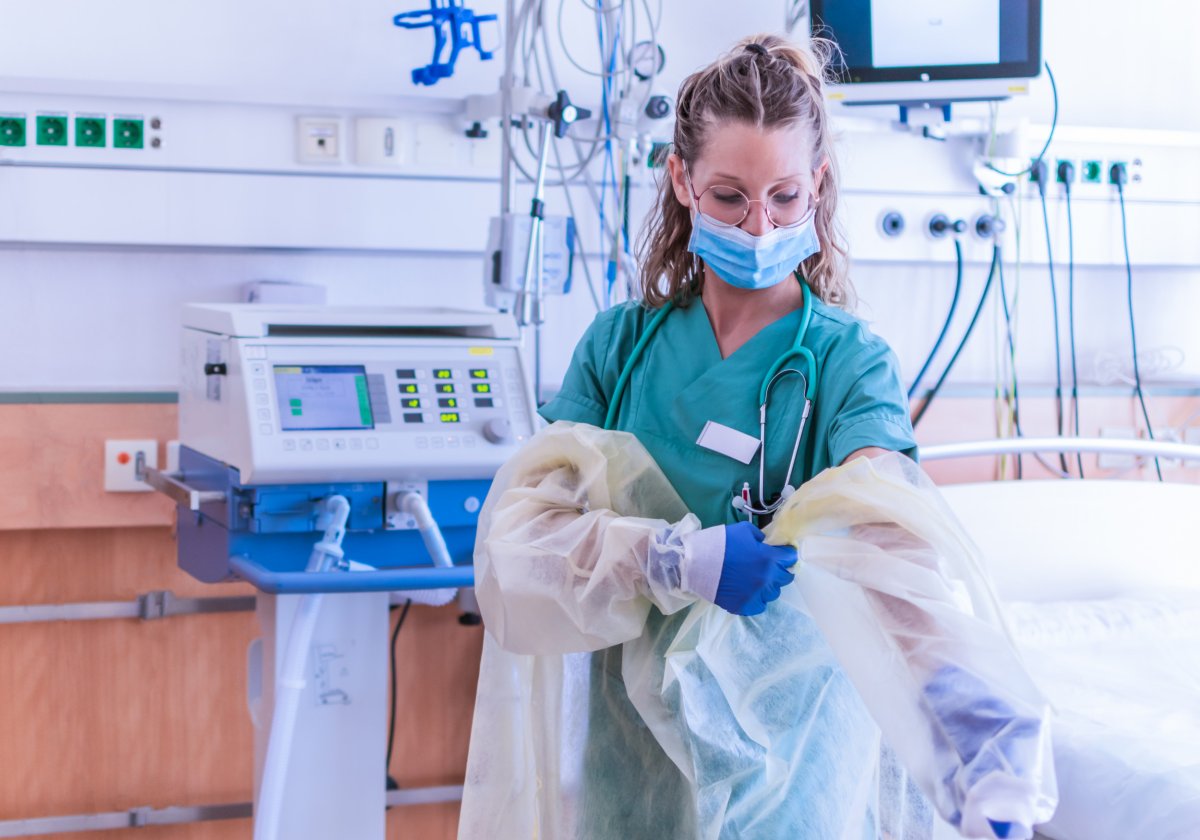
28. Illinois Wesleyan University
- Location: Bloomington, Illinois
- Undergraduate students: 1,689
- Student-teacher ratio: 11:1
- Net price per year: $28,912
- College acceptance rate: 59%
--- SAT score range: 1120-1320
- Graduation rate: 77%
Students at Illinois Wesleyan University have two unique opportunities available to them. The first is the ability to choose internships in a particular health care field, such as pediatrics, rural health care, and emergency medicine, something that is rare in nursing programs as they typically only allow for more generalized internships. The second is the ability to study abroad—in either Barcelona, Spain, or a May term adventure to Hawaii—while staying on track for a four-year graduation.

27. Union University
- Location: Jackson, Tennessee
- Undergraduate students: 1,778
- Student-teacher ratio: 10:1
- Net price per year: $31,980
- College acceptance rate: 57%
--- SAT score range: 1060-1280
- Graduation rate: 68%
Union University, a Christian college in Tennessee, offers 27 different educational tracks in its bachelor's, master's, post-graduate certificate, and doctor of nursing practice programs. With student-to-teacher ratios of 10-to-one, a 98 percent NCLEX pass rate, and a 100 percent post-graduation employment rate, the school is an excellent choice for those looking for flexibility, more focused attention, and a pathway into the industry that's proven to be successful.
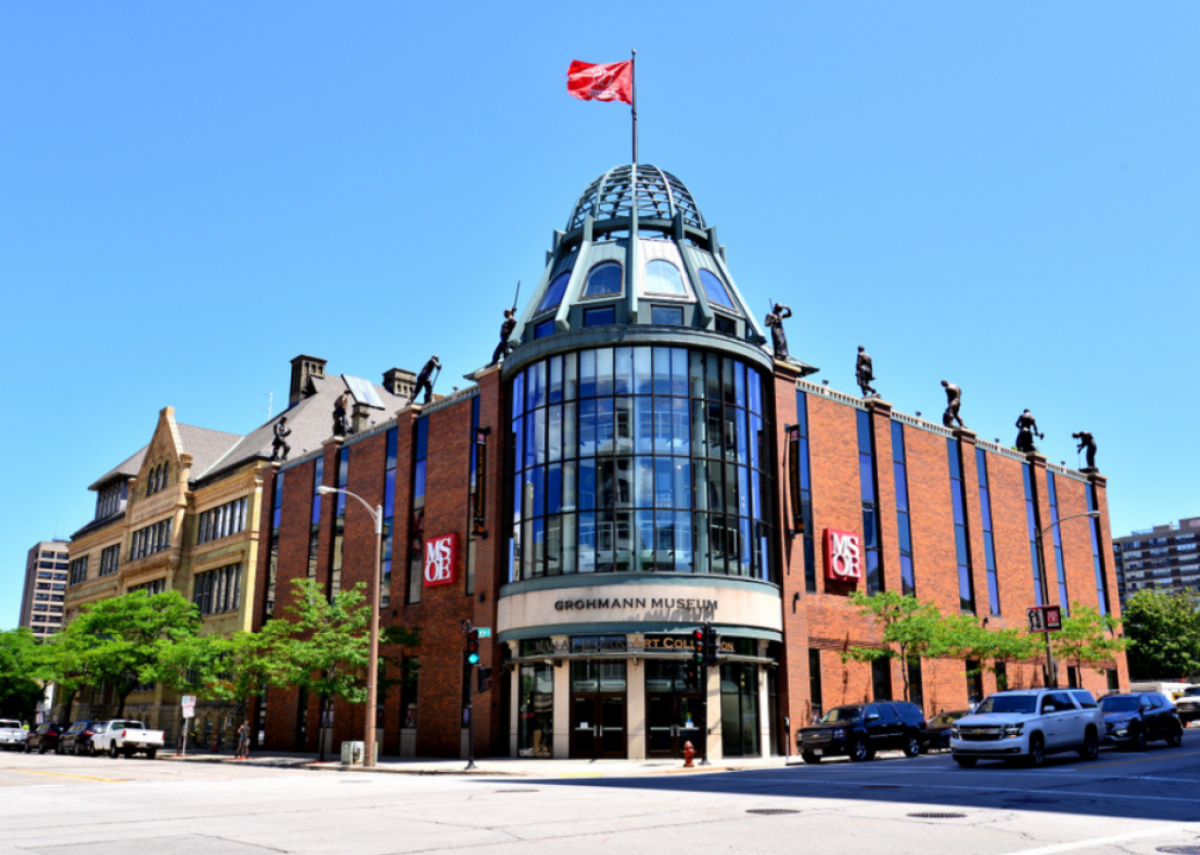
26. Milwaukee School of Engineering
- Location: Milwaukee
- Undergraduate students: 2,491
- Student-teacher ratio: 15:1
- Net price per year: $25,917
- College acceptance rate: 63%
--- SAT score range: 1180-1370
- Graduation rate: 65%
A nursing program at an engineering school may not feel like a traditional choice, but students who attend the Milwaukee School of Engineering would likely say it was one they'd make all over again. With a 98 percent post-grad employment rate and access to state-of-the-art labs and simulation centers, the school provides a high-quality educational experience and ranks No. 1 in the state for NCLEX passing rates.

25. The Ohio State University
- Location: Columbus, Ohio
- Undergraduate students: 42,831
- Student-teacher ratio: 19:1
- Net price per year: $18,706
- College acceptance rate: 52%
--- SAT score range: 1250-1460
- Graduation rate: 86%
One of the larger nursing programs on this list, Ohio State University had 1,200 undergraduate students, 900 graduate students, and 200 doctoral and Doctor of Nursing Practice students in 2020. The university is home to some of the highest-ranked master's degree programs in the nation, including its Pediatric Nurse Practitioner program, Family Nurse Practitioner program, and Psychiatric Mental Health Nurse Practitioner program. Like the undergraduate courses, these on-campus programs are renowned for their academic rigor, emphasis on evidence-based practice, and innovation in incorporating telehealth into wellness care. The university's online programs, which include several master's degree programs as well as an RN to BSN program, are held to the same standard, ranking in the top six and four in the country, respectively.
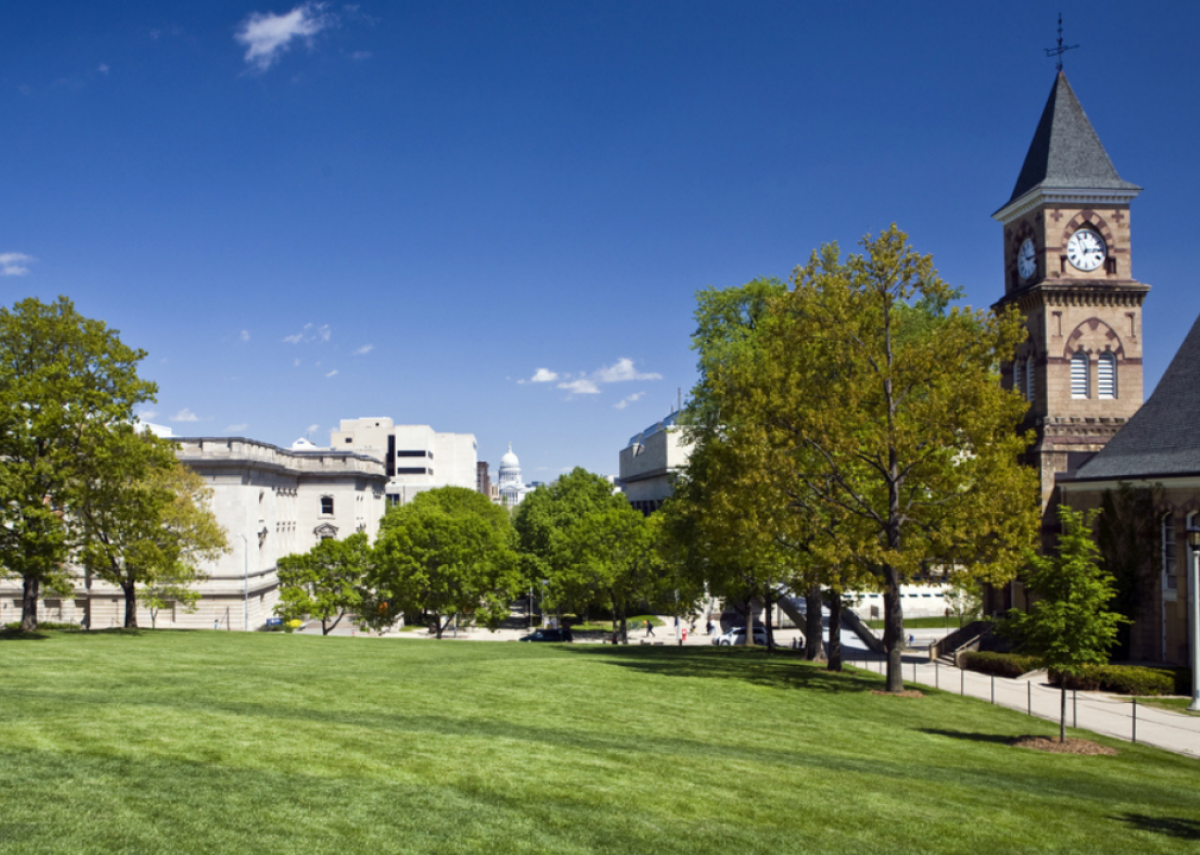
24. University of Wisconsin
- Location: Madison, Wisconsin
- Undergraduate students: 29,375
- Student-teacher ratio: 17:1
- Net price per year: $16,103
- College acceptance rate: 52%
--- SAT score range: 1300-1480
- Graduation rate: 88%
Home to Wisconsin's only academic health center, the University of Wisconsin in Madison provides its nursing students opportunities to learn in state-of-the-art classrooms and labs as well as in clinical settings around the capital city area. The school's 1,000 nursing students are enrolled in nine different programs, including several certificate options that boast a 98.6 percent graduation rate. Within six months 90 percent of these graduates are licensed and practicing.

23. University of Florida
- Location: Gainesville, Florida
- Undergraduate students: 32,209
- Student-teacher ratio: 18:1
- Net price per year: $10,457
- College acceptance rate: 39%
--- SAT score range: 1310-1470
- Graduation rate: 88%
A pioneer in nursing education, the University of Florida is home to the state's first nursing practitioner program, first BSN to doctorate program, and the state's first master's and doctoral programs. The leadership demonstrated by the university's faculty seems to have inspired excellence in the student body, as the average GPA for BSN graduates falls between 3.5 and 3.6. In addition, almost 80 percent of UF graduates pursue continuing education within three years of obtaining their BSN, which allows them to move into leadership positions of their own within the industry.

22. University of San Francisco
- Location: San Francisco
- Undergraduate students: 6,435
- Student-teacher ratio: 13:1
- Net price per year: $38,422
- College acceptance rate: 65%
--- SAT score range: 1130-1330
- Graduation rate: 75%
Nursing students at the University of San Francisco are offered several unique clinical opportunities, like rotations through the Department of Veteran Affairs Northern California Health Care System, as well as other hands-on experiences in lower-income communities through partnerships with organizations like San Francisco City Impact and Engage San Francisco. These opportunities and the experience they provide would make the school an excellent option for those who are looking to pursue a less-traditional nursing path that doesn't include corporate hospitals or exclusive clinics.

21. University of North Carolina at Chapel Hill
- Location: Chapel Hill, North Carolina
- Undergraduate students: 18,526
- Student-teacher ratio: 13:1
- Net price per year: $10,085
- College acceptance rate: 23%
--- SAT score range: 1310-1500
- Graduation rate: 91%
Quality nursing education doesn't come cheap, but the University of North Carolina at Chapel Hill works to ensure that it's affordable for students of all income levels. In 2020, the school awarded $353,000 in nursing school scholarships. The same year, 97 percent of the program's graduates were employed within three months of earning their BSN, enabling them to get a jump on paying back any existing student loans.

20. Azusa Pacific University
- Location: Azusa, California
- Undergraduate students: 5,003
- Student-teacher ratio: 11:1
- Net price per year: $27,707
- College acceptance rate: 69%
--- SAT score range: 1030-1260
- Graduation rate: 68%
In 2020, Azusa Pacific University was named a Nursing College of Distinction, meaning that it was recognized for its high mastery rates, industry connections, dedicated advising, and high-impact experiences. The Christian college prides itself on preparing its students to offer a more compassionate and personal type of medical care regardless of where they wind up working.
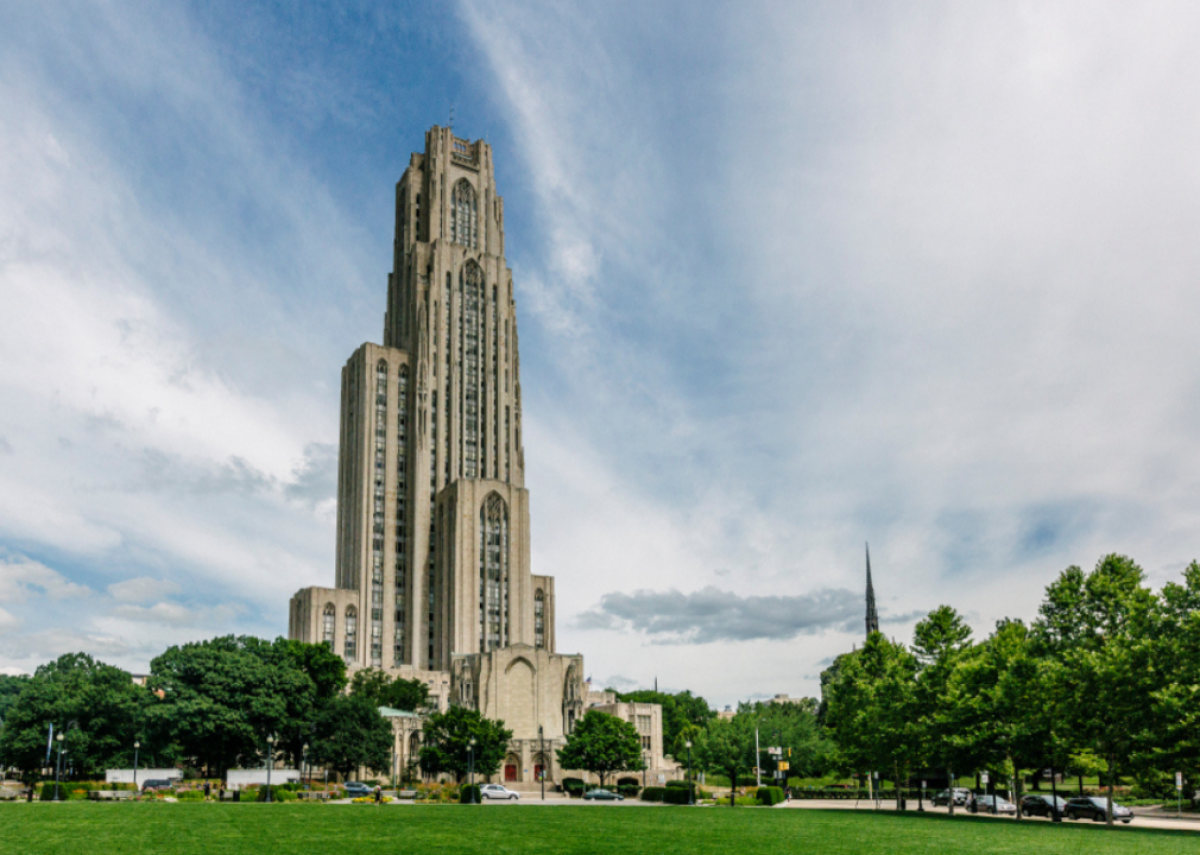
19. University of Pittsburgh
- Location: Pittsburgh
- Undergraduate students: 18,421
- Student-teacher ratio: 14:1
- Net price per year: $22,600
- College acceptance rate: 59%
--- SAT score range: 1260-1440
- Graduation rate: 83%
According to the Academy of American Colleges of Nursing, more than 80 percent of RNs in the United States are white. Compare this to the University of Pittsburgh, where diversity is a major focus and 25% of undergraduate nursing students were minorities in 2020. This focus on diversity extends into the students' education, with many undergraduates choosing to study abroad or earn certificates in areas like global health care.

18. Brigham Young University
- Location: Provo, Utah
- Undergraduate students: 28,253
- Student-teacher ratio: 20:1
- Net price per year: $13,340
- College acceptance rate: 64%
--- SAT score range: 1210-1420
- Graduation rate: 78%
At Brigham Young University, undergraduate nursing students have the option of adding minors in gerontology studies and women's studies to their undergraduate programs, which could give them an advantage when it comes to finding a job after graduation. The program is overwhelmingly female—91 percent of undergraduate students and 74 percent of graduate students—but 72 percent of undergrads come from states other than Utah, which allows for a more rounded cohort.

17. Point Loma Nazarene University
- Location: San Diego
- Undergraduate students: 2,595
- Student-teacher ratio: 14:1
- Net price per year: $33,183
- College acceptance rate: 69%
--- SAT score range: 1140-1310
- Graduation rate: 75%
Point Loma Nazarene University understands that good nursing requires interpersonal and emotional skills as well as those that can be taught in a classroom. In an effort to ensure their graduates obtain these additional skills, the university encourages its students to participate in the community classroom program. Set in the City Heights neighborhood of San Diego, the program allows students the opportunity to spend time in a multi-ethnic community, taking courses on ethics, race, and foreign languages, and participating in clinical externships.
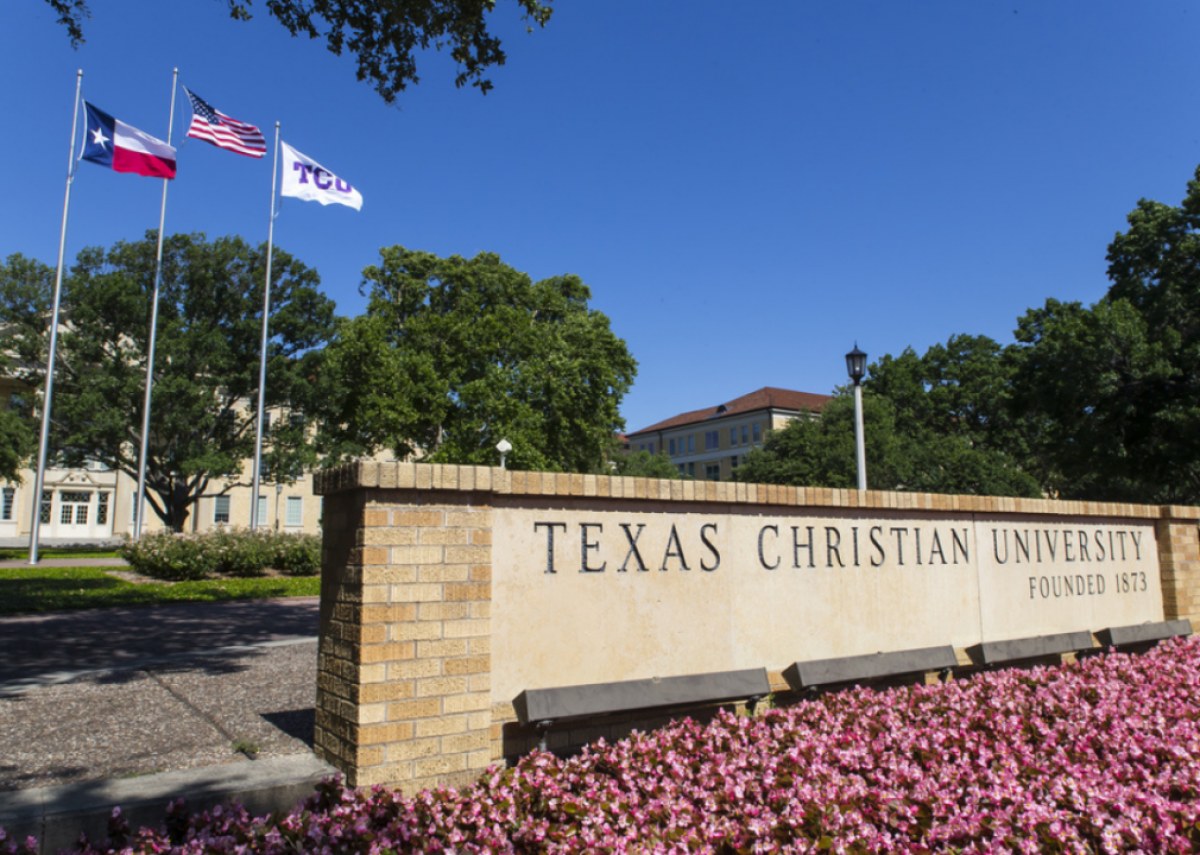
16. Texas Christian University
- Location: Fort Worth, Texas
- Undergraduate students: 9,162
- Student-teacher ratio: 13:1
- Net price per year: $37,509
- College acceptance rate: 41%
--- SAT score range: 1150-1350
- Graduation rate: 83%
The Harris College of Nursing & Health Sciences at Texas Christian University offers traditional and accelerated Bachelor of Science in nursing programs, four Masters of Science in nursing degree programs, and five Doctor of Nursing Practice programs, making it a place nursing professionals can return to at all points in their education. In spite of this wide range, the school still manages to foster a sense of community among the students with programs like the Student Nurses Association, Chi Eta Phi, and Sigma.

15. University of Portland
- Location: Portland, Oregon
- Undergraduate students: 3,702
- Student-teacher ratio: 12:1
- Net price per year: $36,051
- College acceptance rate: 75%
--- SAT score range: 1150-1350
- Graduation rate: 81%
A more holistic approach to health and healing, called integrative health, is embodied in the curriculum at the University of Portland nursing school. Teachings are based on the idea that an open belief system, commitment to relationship, and willingness to embrace spirituality are just as important as scientific knowledge, as an individual's mind, spirit, and body must all be treated in order to heal. This singular approach sets the school apart from other, more traditional, programs.
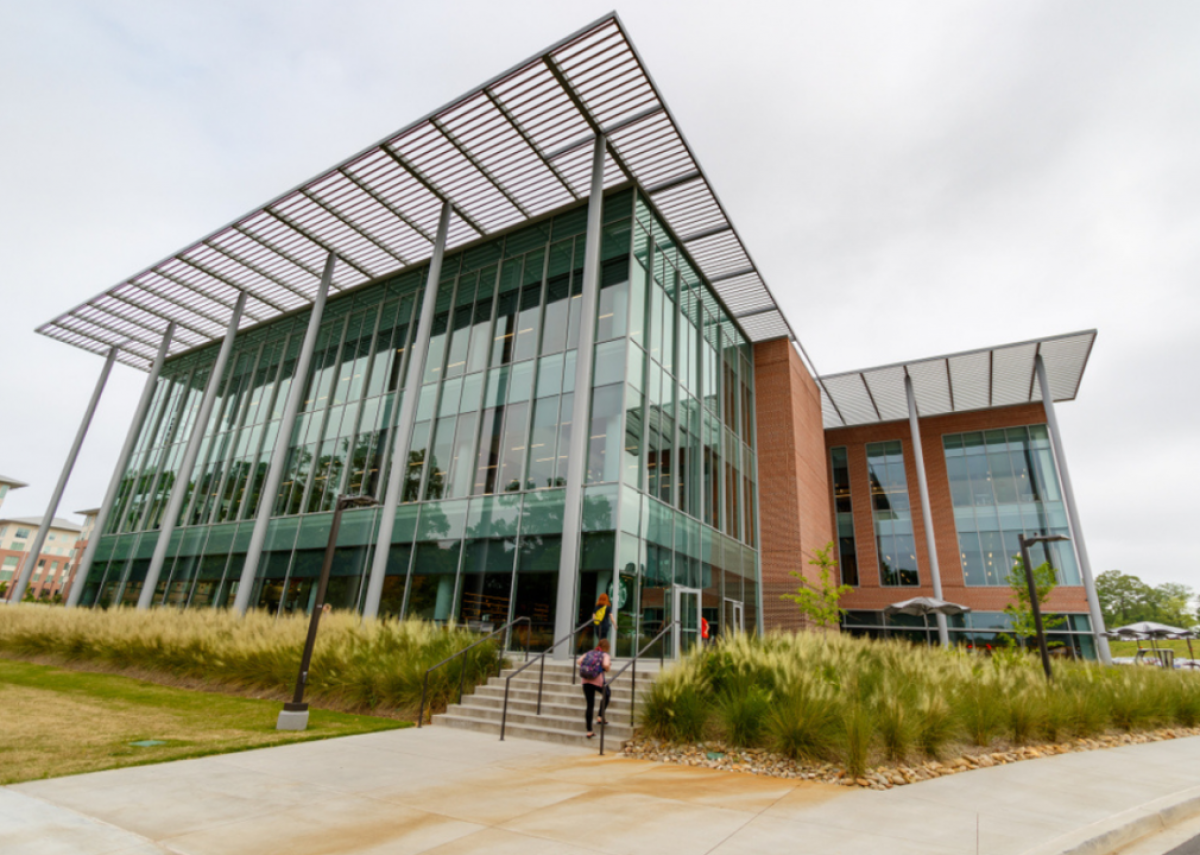
14. Clemson University
- Location: Clemson, South Carolina
- Undergraduate students: 18,971
- Student-teacher ratio: 16:1
- Net price per year: $21,482
- College acceptance rate: 47%
--- SAT score range: 1230-1400
- Graduation rate: 84%
Currently celebrating its 50th anniversary, Clemson University's nursing school is still growing with a Doctor of Nursing Practice program in family and adult/gerontology nurse practitioner tracts set to begin in May 2022. Students who have completed one of the school's existing bachelor's, master's, or DNP programs prove to be well-prepared for the field, reporting a nearly 100 percent job placement rate within three months of graduation.
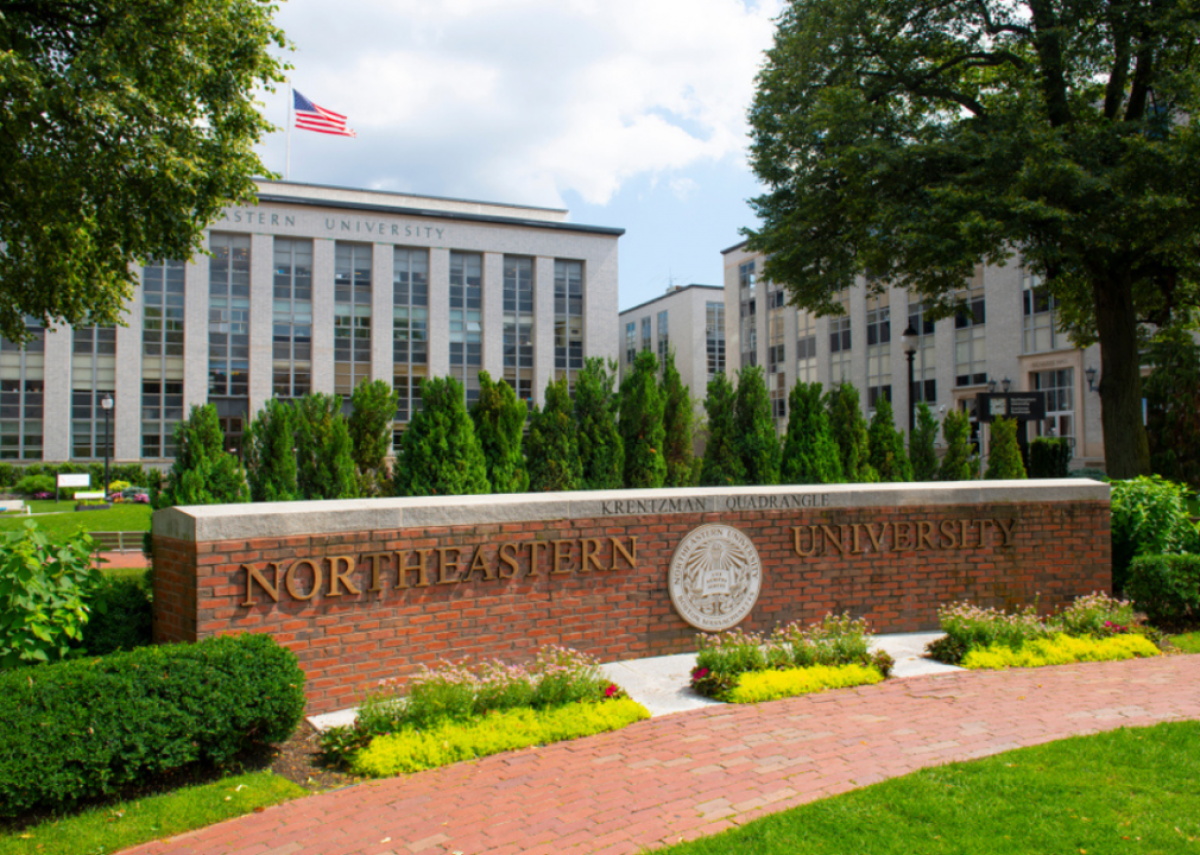
13. Northeastern University
- Location: Boston
- Undergraduate students: 13,864
- Student-teacher ratio: 14:1
- Net price per year: $36,479
- College acceptance rate: 19%
--- SAT score range: 1390-1540
- Graduation rate: 89%
While many other schools on this list offer unique hands-on and cooperative learning experiences, Northeastern is the only one to require them of its students. The school believes so strongly in the benefit of experiential learning, that all undergraduate nursing students must complete two six-month cooperative learning experiences in order to receive their diplomas. Students who learn best through doing would likely fare well at this Boston-area college.
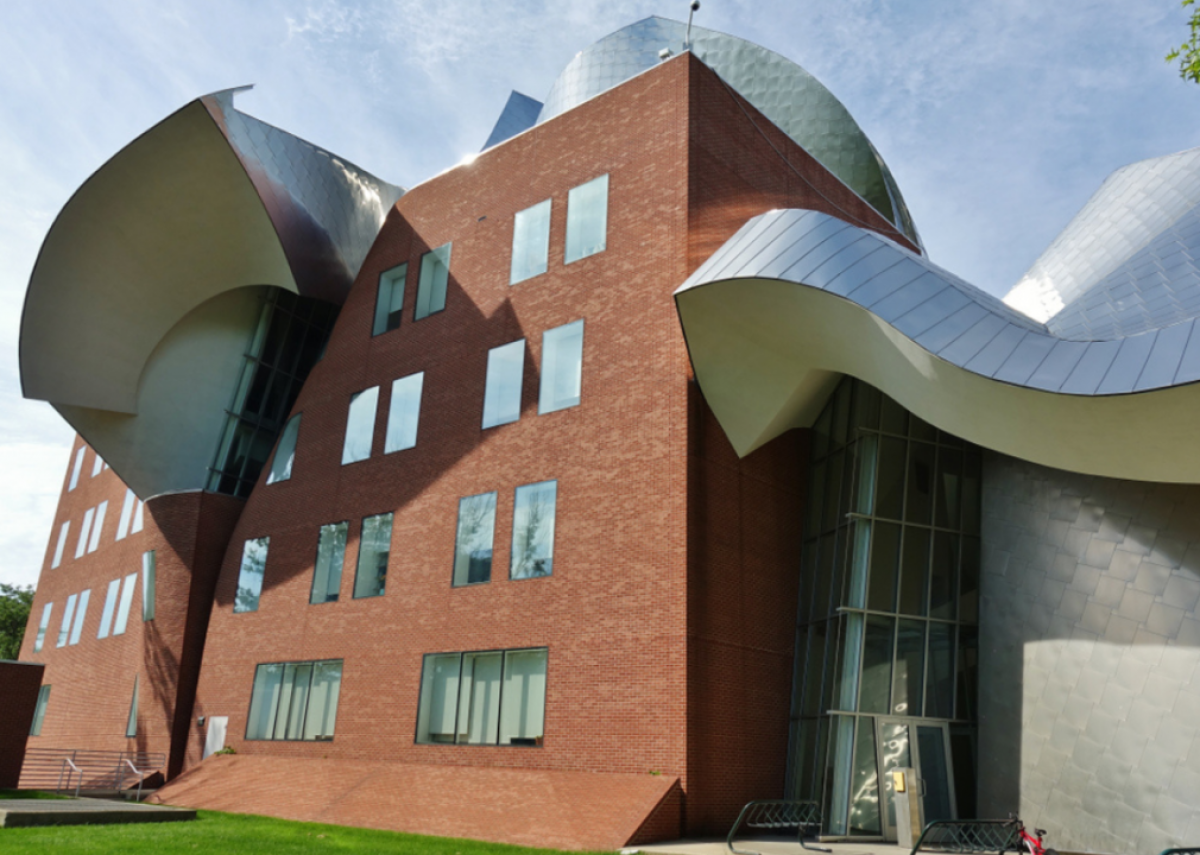
12. Case Western Reserve University
- Location: Cleveland
- Undergraduate students: 5,095
- Student-teacher ratio: 11:1
- Net price per year: $35,890
- College acceptance rate: 29%
--- SAT score range: 1340-1510
- Graduation rate: 84%
Case Western Reserve University prepares its nursing students to not just be excellent health care providers, but leaders as well. Students at the school will complete nearly double the national average of clinical hours, will spend time working on required civic engagement projects, and will have the opportunity to train at the Marian K. Shaughnessy Nurse Leadership Academy.
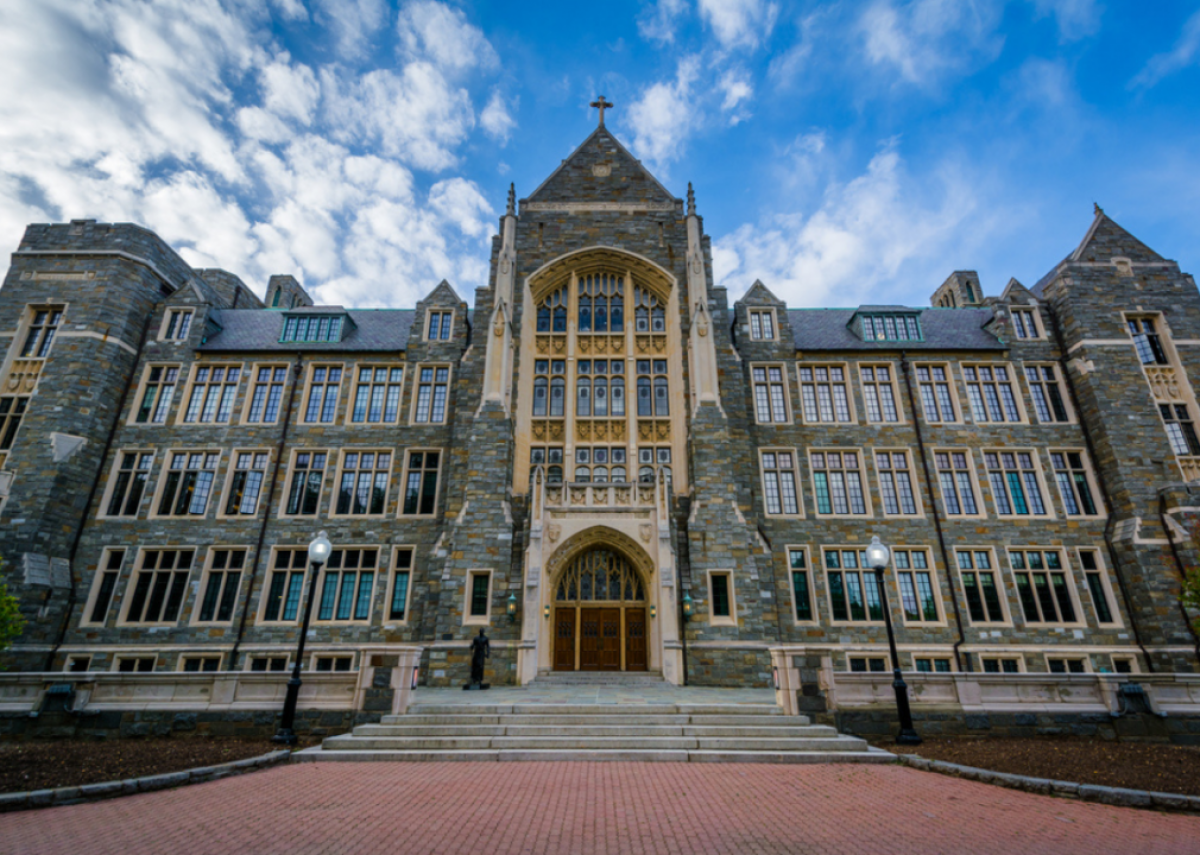
11. Georgetown University
- Location: Washington D.C.
- Undergraduate students: 6,990
- Student-teacher ratio: 11:1
- Net price per year: $28,442
- College acceptance rate: 15%
--- SAT score range: 1380-1550
- Graduation rate: 95%
The Georgetown University School of Nursing and Health Studies was founded in 1903. Students pursuing their BSN at the university will complete 850 clinical hours, spend semesters in the O'Neill Family Foundation Clinical Simulation Center, and have the opportunity to gain further experience in specific fields of their choice through a senior year nursing practicum. In addition, all financial aid is need-based, meaning that students of all financial backgrounds are encouraged to apply.
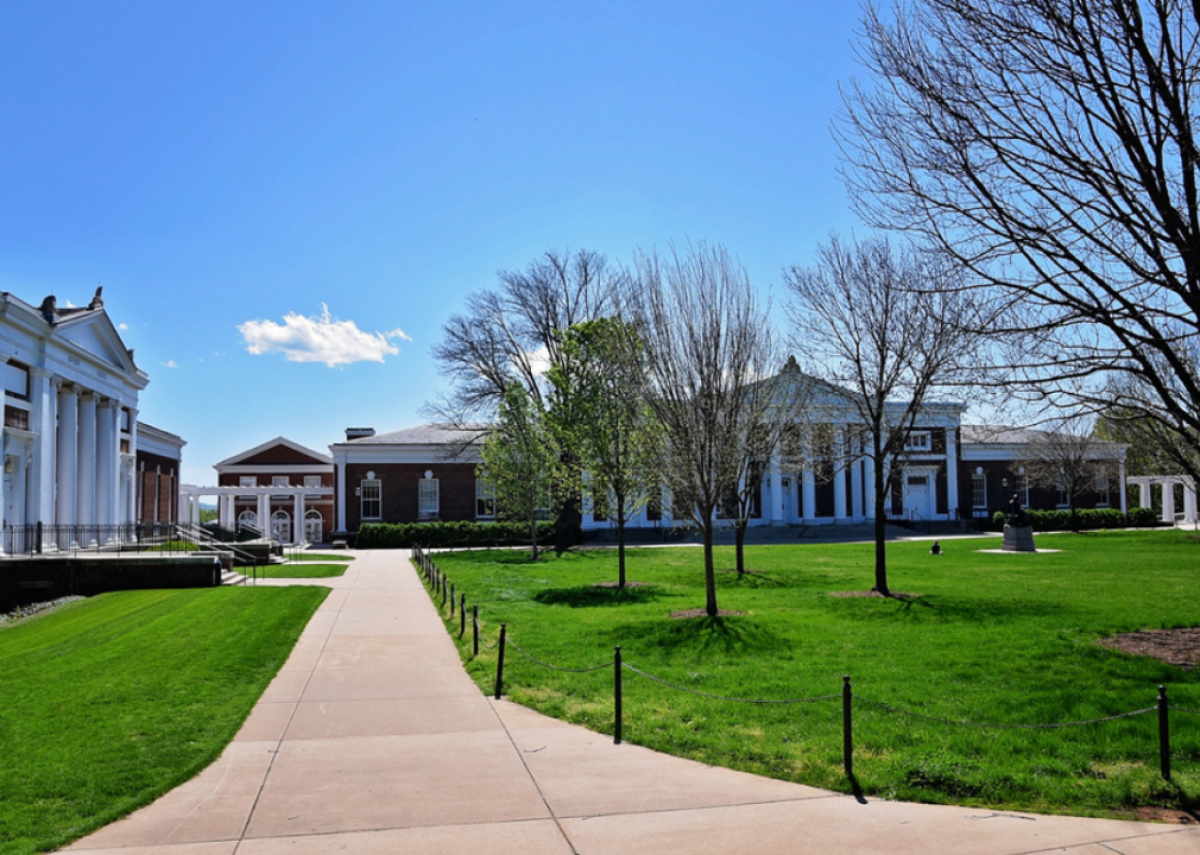
10. University of Virginia
- Location: Charlottesville, Virginia
- Undergraduate students: 15,990
- Student-teacher ratio: 15:1
- Net price per year: $17,579
- College acceptance rate: 26%
--- SAT score range: 1340-1520
- Graduation rate: 95%
Diversity is the name of the game in the University of Virginia's nursing program: one in five students in the school identifies as male, one-third are minorities, and one in five are first-generation college attendees. The school is so focused on building a diverse student body and workforce that it launched the Inclusion, Diversity & Excellent Achievement (IDEA) initiative, whose mission is to ensure that the school's curriculum, as well as the nurses it turns out, are actively anti-racist.
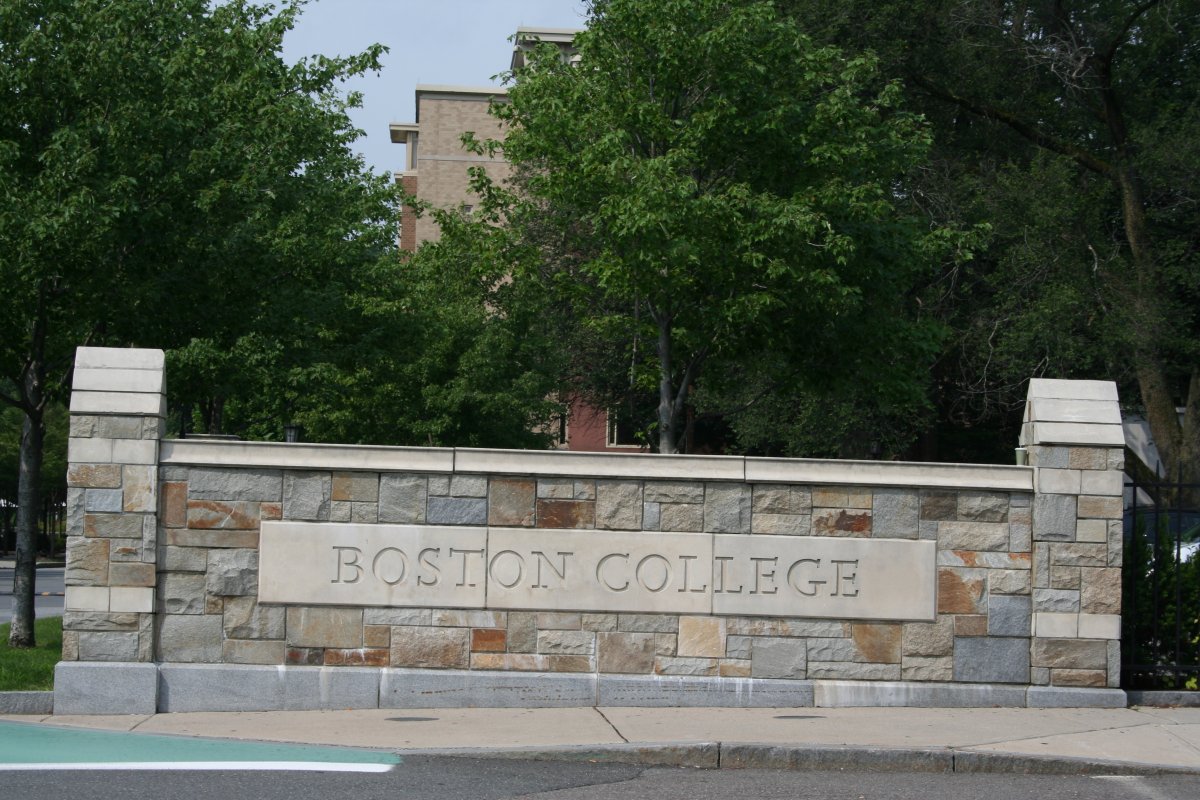
9. Boston College
- Location: Chestnut Hill, Massachusetts
- Undergraduate students: 9,696
- Student-teacher ratio: 13:1
- Net price per year: $28,354
- College acceptance rate: 28%
--- SAT score range: 1340-1500
- Graduation rate: 94%
The faculty at Boston College are truly a world apart. Of the 54 full-time educators, 11 have been inducted as American Academy of Nursing Fellows, and 61% of them are active nursing professionals. With a student-to-teacher ratio of 14-to-1, BC undergrads will find that they have direct and easy access to some of the industry's leading minds.
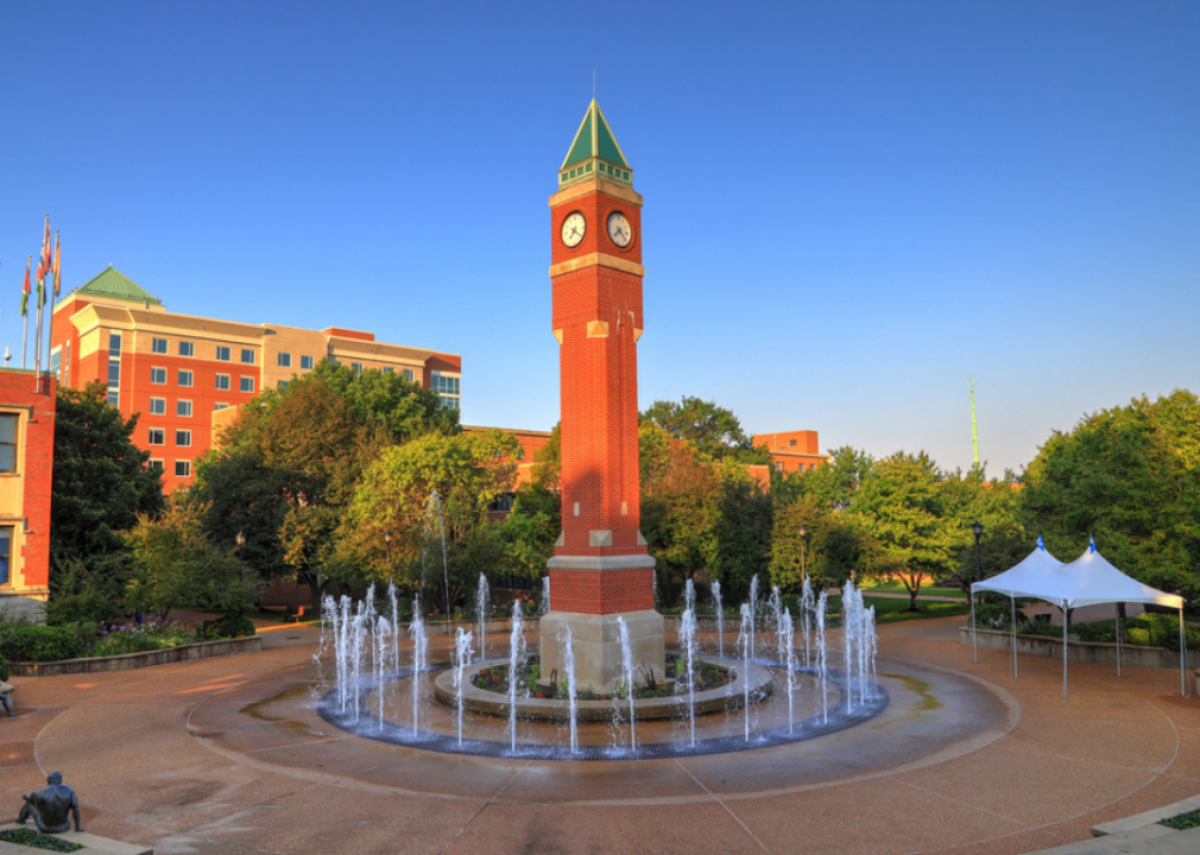
8. Saint Louis University
- Location: Saint Louis
- Undergraduate students: 6,440
- Student-teacher ratio: 9:1
- Net price per year: $31,098
- College acceptance rate: 58%
--- SAT score range: 1170-1380
- Graduation rate: 79%
The Trudy Busch Valentine School of Nursing at Saint Louis University is home to some 1,119 students. In spite of the fact that the school is located in such a large, expensive city, the program is relatively affordable thanks to the 40+ scholarships it offers to students at all education levels. Bachelor's degree students leave SLU well-prepared for the real world, with a 94 percent NCLEX pass rate.
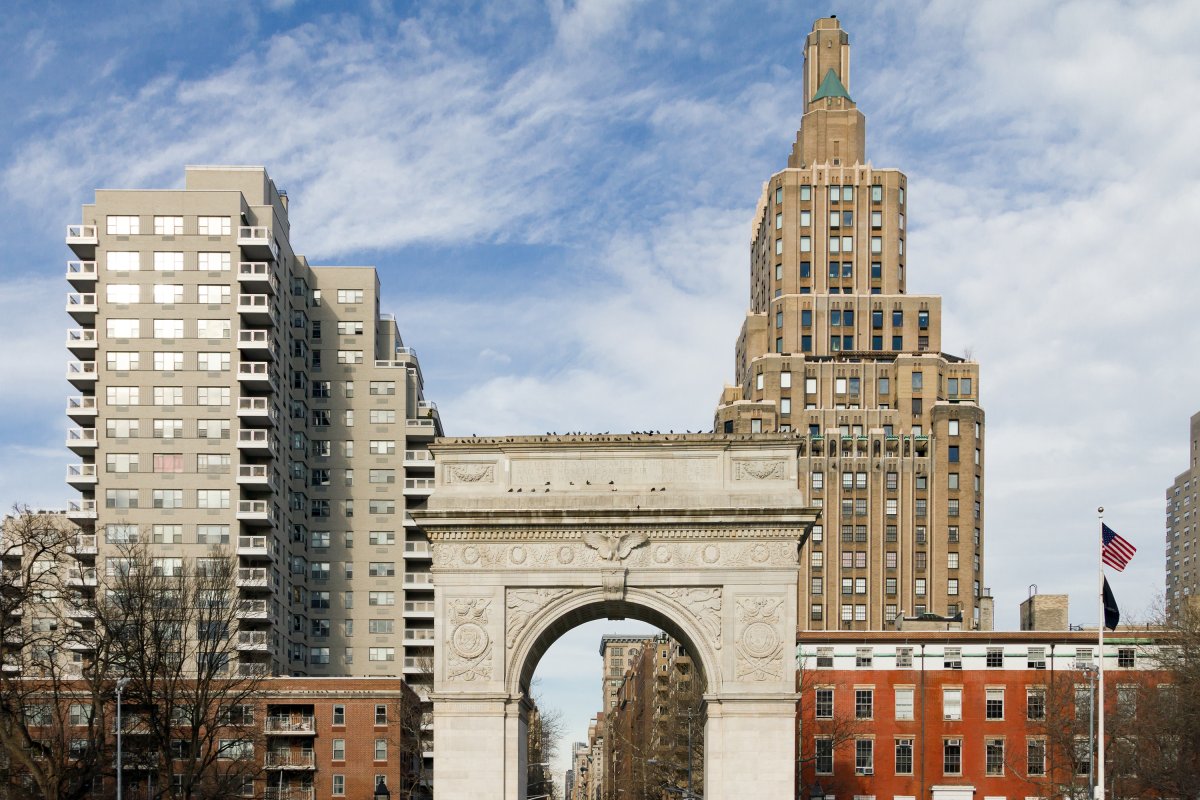
7. New York University
- Location: New York
- Undergraduate students: 25,725
- Student-teacher ratio: 9:1
- Net price per year: $37,739
- College acceptance rate: 20%
--- SAT score range: 1350-1530
- Graduation rate: 85%
Of all the programs New York University offers, nursing school graduates demand the highest median salary immediately after graduation at $86,000. This, combined with the fact that 88% of students find work upon completing their programs, means that although the school is academically challenging and costly, it's a worthwhile investment for those who truly feel a calling to work in the field.

6. University of Michigan – Ann Arbor
- Location: Ann Arbor, Michigan
- Undergraduate students: 29,245
- Student-teacher ratio: 11:1
- Net price per year: $17,357
- College acceptance rate: 23%
--- SAT score range: 1340-1530
- Graduation rate: 93%
At the University of Michigan, nursing students are not only trained in the best currently existing practices, but to lead the way in creating new and innovative best practices that aim to better patient care and medical knowledge. With a $1 billion research budget and 1.2 million-square-feet of research facilities, the school has ample resources to provide masters and doctoral students with the things they need to further the field and conduct even the most complex research projects.

5. University of Rochester
- Location: Rochester, New York
- Undergraduate students: 6,293
- Student-teacher ratio: 10:1
- Net price per year: $32,939
- College acceptance rate: 29%
--- SAT score range: 1310-1500
- Graduation rate: 87%
Among the first schools in the country to offer a nursing diploma program, the University of Rochester is closing in on 100 years of educating and equipping these vital health care workers. The school follows a unique Unification Curriculum Model that places equal emphasis on education, research, and practice. In action, this looks like plenty of classroom time and hands-on learning, opportunities to participate in research projects as undergraduates and using learned skills in the community, serving the area's homeless community, and ensuring that people of color have access to high-quality care.

4. Villanova University
- Location: Villanova, Pennsylvania
- Undergraduate students: 6,565
- Student-teacher ratio: 11:1
- Net price per year: $36,840
- College acceptance rate: 29%
--- SAT score range: 1320-1470
- Graduation rate: 90%
Villanova University's nursing school is a notoriously difficult program to get into, but those who do manage it have a good chance of landing a high-paying job after graduation—98.8 percent of graduates secure gainful employment with an average starting salary of $69,380. A five-time National League for Nursing Center of Excellence winner, the school has over 9,000 alumni worldwide that are able to use their experience and connections to help new graduates land these positions.

3. Emory University
- Location: Atlanta
- Undergraduate students: 6,985
- Student-teacher ratio: 9:1
- Net price per year: $25,942
- College acceptance rate: 19%
--- SAT score range: 1360-1530
- Graduation rate: 90%
Atlanta is known as one of the best health care hub cities in the nation. Students at Emory University have access to more than 500 diverse clinical sites in the Atlanta area, which allow them to come into contact with and learn from plenty of well-respected nurses and nurse practitioners. These experiences and connections certainly help students obtain high-paying work upon completion of their degrees—88 percent of bachelor's degree holders find jobs within three months and report an average starting salary of $53,000.
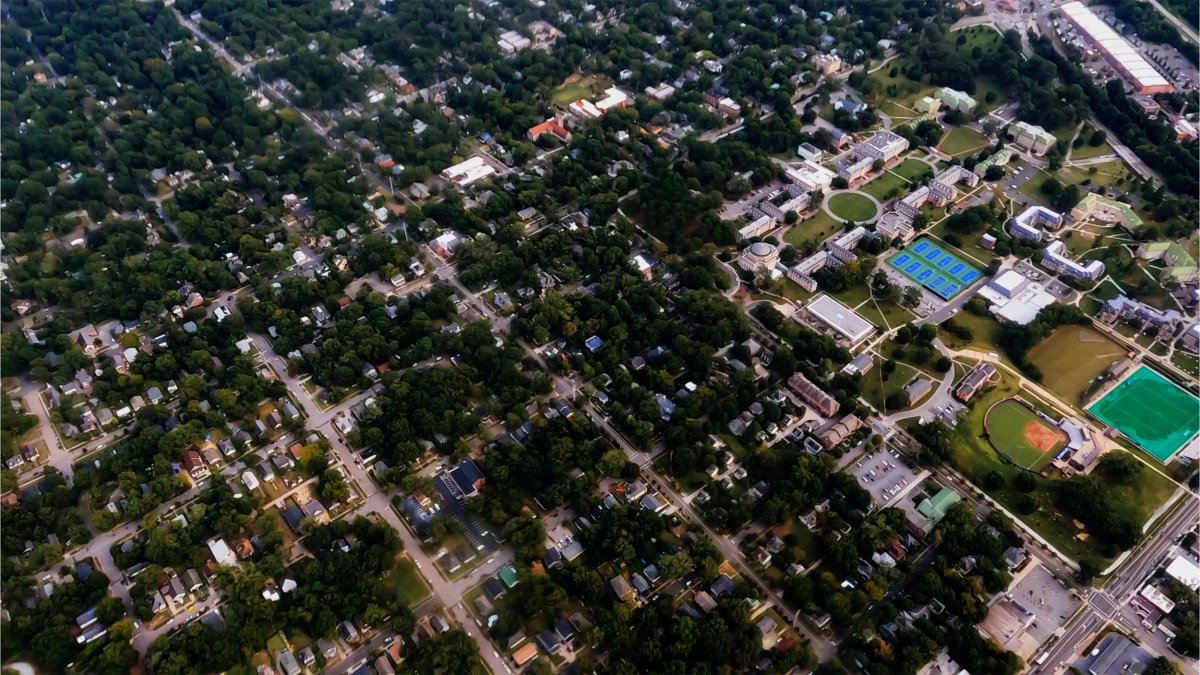
2. Duke University
- Location: Durham, North Carolina
- Undergraduate students: 6,659
- Student-teacher ratio: 6:1
- Net price per year: $24,386
- College acceptance rate: 9%
--- SAT score range: 1480-1570
- Graduation rate: 95%
There are many factors that make Duke University's nursing program one of the best: the excellent faculty, a wide variety of programs, access to the state's #1 hospital for clinical hours, a focus on research and innovation—the list could go on. But one thing in particular that really sets it apart is the way in which it introduces students to often-overlooked community health care fields. For example, Duke partners with TROSA, a substance abuse program, and the Duke Elder Family/Caregiver Training Center, which equips graduate students with the experience and training in providing long-term and end-of-life home care, two particular care fields not offered in many nursing programs.
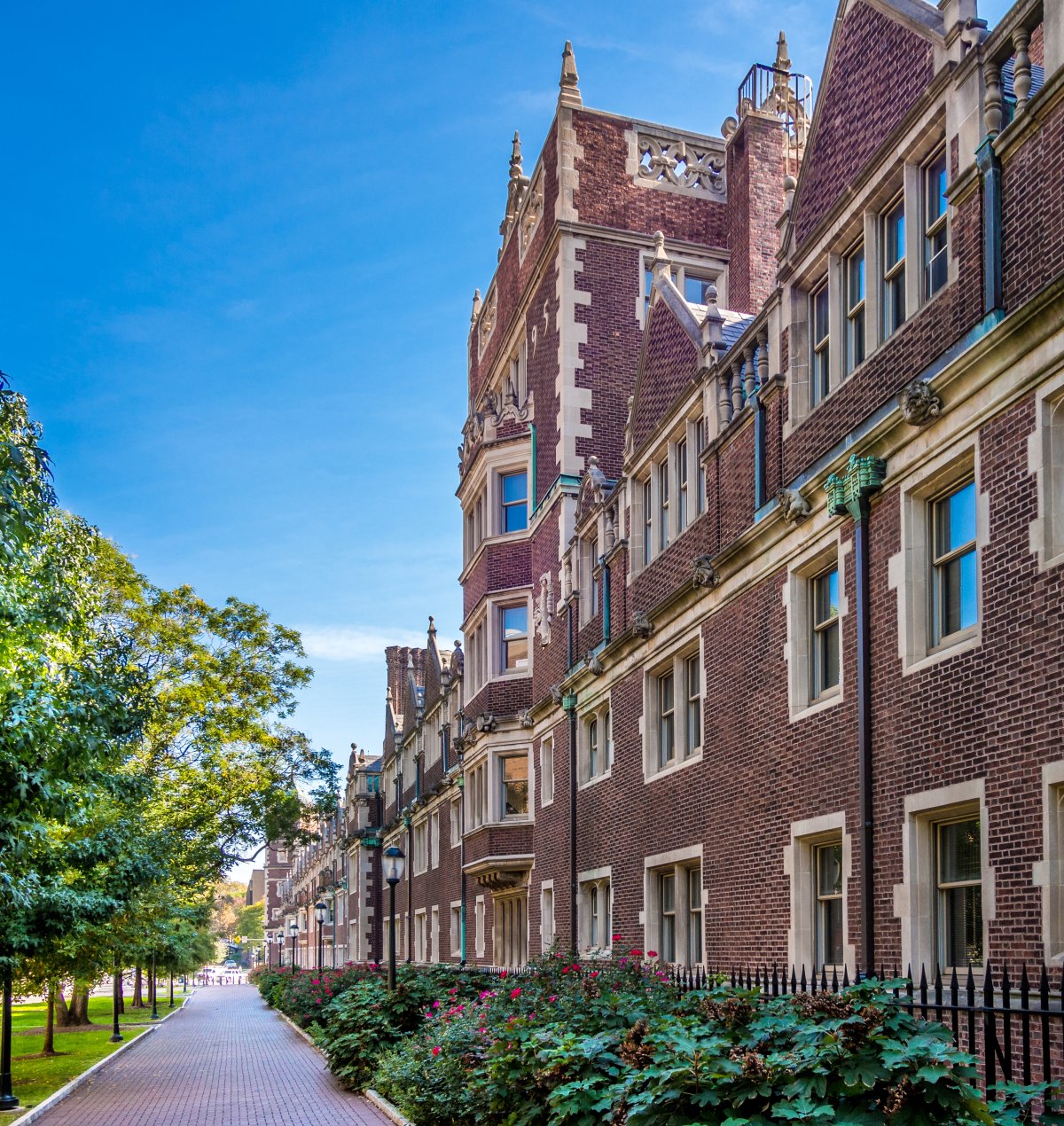
1. University of Pennsylvania
- Location: Philadelphia
- Undergraduate students: 10,605
- Student-teacher ratio: 6:1
- Net price per year: $24,771
- College acceptance rate: 8%
--- SAT score range: 1450-1560
- Graduation rate: 96%
Finally, Nursingeducation.org determined that the University of Pennsylvania was the best college for nursing in America. Established in 1886, Penn Nursing provides an Ivy League education that includes rigorous clinical opportunities at leading hospitals, access to a state-of-the-art simulation center, student research opportunities, and classrooms equipped with the latest medical records technology. Graduates from Penn are truly health care leaders.
Uncommon Knowledge
Newsweek is committed to challenging conventional wisdom and finding connections in the search for common ground.
Newsweek is committed to challenging conventional wisdom and finding connections in the search for common ground.
About the writer
To read how Newsweek uses AI as a newsroom tool, Click here.








